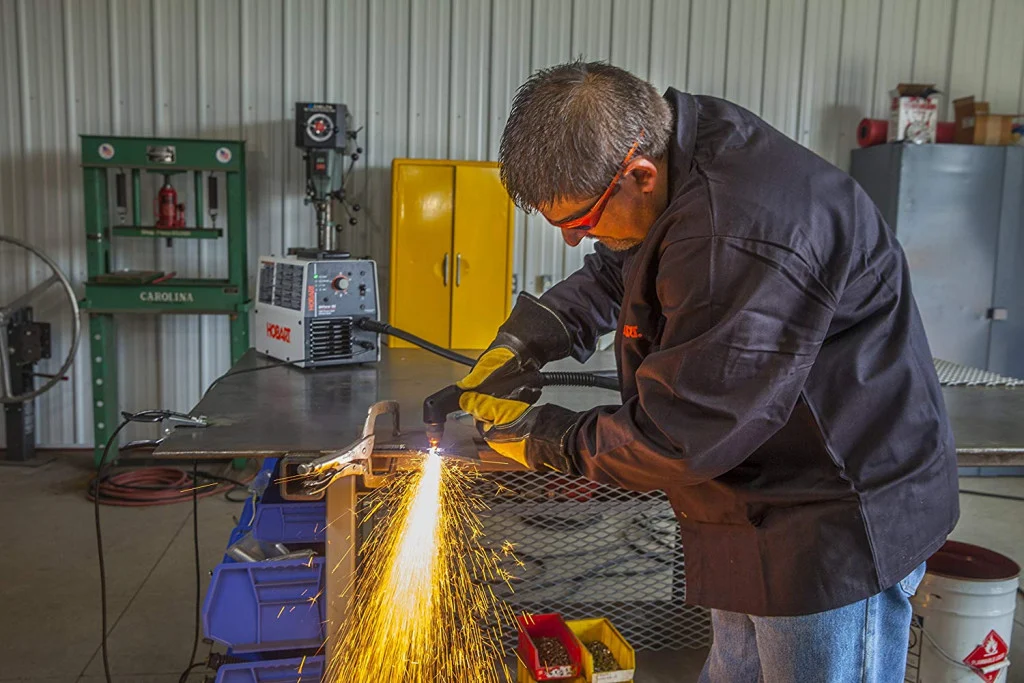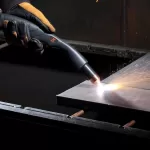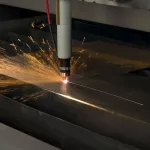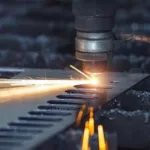Whether it’s for home repairs or as a hobby, the introduction of the plasma cutter has made home steel and metal working more accessible for the everyday craftsman.
Welding Town
Suitable for handheld use, this ingenious device is perfect for home improvement work and can even be used on the move. When you use a plasma cutter correctly, you can shear metal materials faster than ever before. Here’s what you need to know about how to use a plasma cutter at home.

Running Your Plasma Cutter Optimally at Home
A plasma cutter is really every mechanic’s dream. This tool utilizes a high-powered thermal plasma beam that allows you to cut any conductive material easily and economically.
Plasma cutters are usually very easy to learn and use, but it’s important to check preparation and electrical capabilities before cutting. Follow this quick guide to make sure you’ve followed all the steps and checks to set up an ideal plasma cutter in your home.
The technology of plasma cutters has been around since the 1950s. Larger, mechanized plasma cutters have been used in many industries. Now, you can even purchase portable plasma cutters that are perfect for use at home.
The ideal plasma cutter kit will come with a power supply, arc start console, and plasma torch. While most modern models have three-phase inputs, some varieties even offer one-phase and three-phase inputs.
Handheld plasma cutter setups will come with a torch and an electric gas input. The most important factor for each model is to ensure a steady supply of clean, dry air.
What You Need for a Plasma Cutter Setup at Home
Ruggedized power supply
The most common plasma cutters require a 110 volt to 220 volt power input. These types are suitable for home use and are highly portable. Larger types will require higher voltages.
As a general rule of thumb, always check the owner’s manual to ensure the correct power supply.
When cutting thicker steel and metal, your plasma cutter will draw 40 to 50 amps, so a sturdy power supply is essential.
Air Compressor
The air compressor is a very important factor as it generates the pressure needed to feed the plasma cutter. Some models actually come with an inbuilt air compressor.
Humidity filter
A humidity filter is recommended, especially if the cutter is used frequently. A humidity filter will ensure a smooth flow of air, which is essential to optimise the use of the cutter.
Grinding Wheel / Wire Wheel
This is a recommended use only. Plasma cutters work best on clean raw steel or metal. You can use an abrasive wheel to grind away paint and varnish to ensure that the original metal is exposed.
Do I Need to Upgrade My Electricity to Use a Plasma Cutter at Home?
This is not always certain. Most modern electrical distribution boxes are perfectly capable of handling your plasma cutter. Just be sure to supply the correct voltage to your machine and avoid overcrowding your outlets.
However, if you have an outdated or older distribution box, you may run into some problems. Older distribution boxes may be prone to short circuits and blown fuses.
If you’re not sure if your current electrical setup supports your plasma cutter, consider upgrading your distribution box to ensure a smooth power supply.
Tips for the Perfect Plasma Cutter Cut
Here are some tips you can follow to increase the efficiency of your plasma cutter and improve the quality of your cuts when cutting with your cutter at home:
Pay attention to the level
Maintaining a consistent level creates a clear path for cutting.
Keep the machine at a 90° angle while cutting.
Ensure that the metal to be cut is not warped or bent, as this can affect the consistency of the cut.
Maintain continuous contact and traveling speed
When cutting, you want to maintain the same level of contact at all times to get the smoothest cut possible.
It is recommended to run the cutting path several times with the torch off to ensure you get a feel for it.
Once the torch is turned on, be sure to maintain a constant speed of movement.
Moving too slowly may result in an uneven cut.
Use the correct nozzle
Depending on the material you plan to cut, you will need different current levels and therefore need to use different nozzles for your torch.
Smaller nozzles should be used for lower currents.
Using a plasma cutting table
These cutting tables use computer numerical control (CNC) technology, which means you can get robot-like precision on every cut.
By following these tips, you’ll be able to easily ensure that you get the cleanest cuts from your garage.
Using a plasma cutter means you can make narrow, precise cuts with minimal heat in the affected area (which helps to minimise warping or bending of the material).
Whether it’s a handheld unit or a larger one, make sure you follow all the setup instructions to ensure you have the best air and power supply for your plasma cutter.










